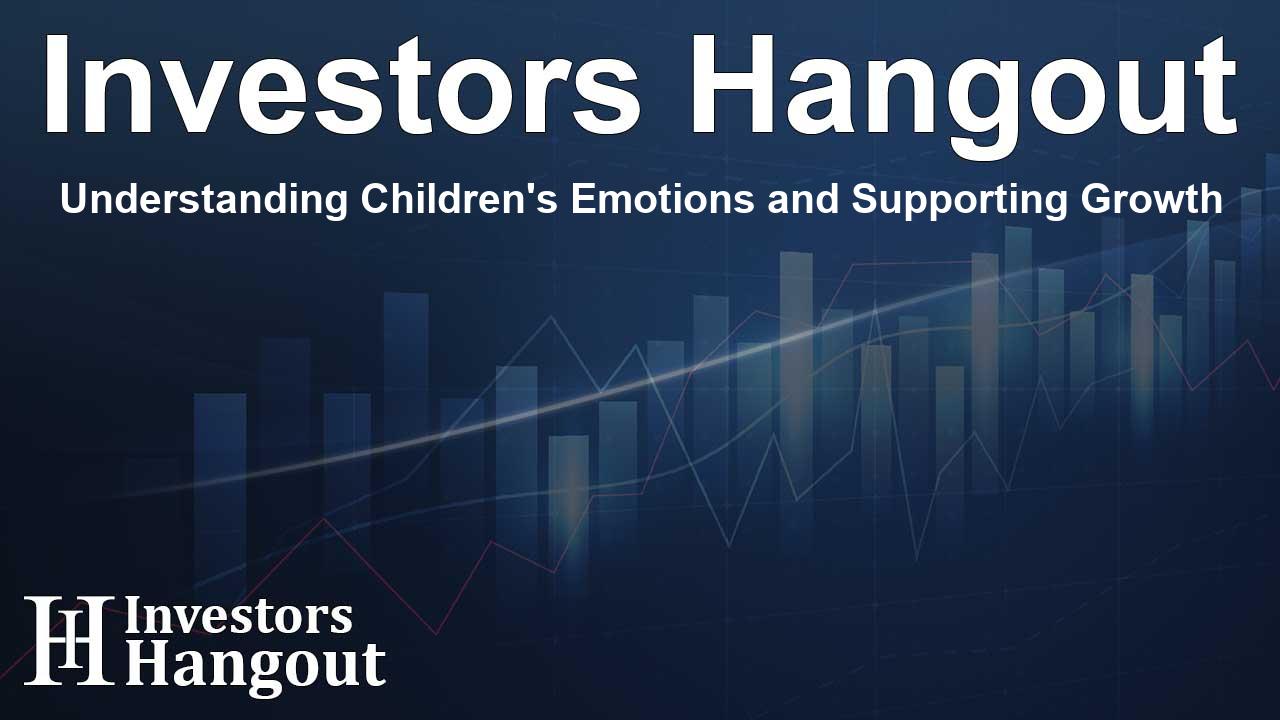Understanding Children's Emotions and Supporting Growth

Helping Children Navigate Their Big Emotions
Children often face overwhelming emotions as they experience the world around them. It's common for them to react with anger or frustration when they feel overstimulated or confronted with new situations. These strong feelings can stem from various sources such as embarrassment, shame, or a perceived sense of injustice.
Why Emotions Matter
Many young children cannot eloquently express or regulate their emotional states, leading to tantrums, mood changes, and emotional outbreaks. This behavior can be distressing for parents who might feel helpless in these situations. It's important to acknowledge that every parent has encountered similar challenges with their children.
Expert Insights
Dr. Lauren Loquasto, senior vice president and chief academic officer at The Goddard School, alongside Kelly Oriard and Callie Christensen, founders of Slumberkins, emphasizes the importance of addressing children's emotional outbursts constructively. Their book, "All Feelings Welcome," provides valuable strategies for parents.
Strategies to Manage Meltdowns
To handle emotional outbursts effectively, parents should aim to maintain their calmness. Speaking in a soft tone and moving slowly can help counterbalance the intensity of a child’s emotions. Engaging in deep breathing can make a significant difference, creating a sense of safety as the child expresses their feelings.
Instead of reprimanding, start by expressing empathy. Acknowledge the child’s feelings with phrases like, "It’s okay to feel angry sometimes" or "I understand why you feel upset right now." This validation can significantly reduce the intensity of emotions.
Encourage children to label their feelings. Use a technique known as ‘sportscasting’, where you narrate what is happening from an objective standpoint. For example, “I see your fists are clenched, and you’re breathing heavily. It seems like you're feeling upset because your sister took your toy. Am I right?” This approach helps children connect their physiological responses to their emotions.
Reconnect and Repair
Once the child has calmed down, it's essential to reconnect. Sharing your own coping mechanisms, like stomping your feet or listening to music when you feel angry, models healthy emotional regulation. Use moments of emotional turmoil to teach and practice these skills.
If you find yourself reacting in ways you regret, such as yelling, addressing it openly with your child can help both of you move on. Showing that it’s okay to make mistakes and apologize promotes emotional growth and resilience in your children.
Preventative Measures for Emotional Well-being
Understanding that emotional responses are a natural part of childhood is key. However, there are proactive steps parents can take to reduce the likelihood of meltdowns. Establishing a consistent routine offers children stability, which can help mitigate emotional dysregulation.
While routines provide structure, it is also vital to prepare children for potential changes or disruptions in their daily lives. Talking through upcoming changes can equip them with the tools needed to manage their emotions more effectively.
Identifying Potential Triggers
Be aware that certain scenarios, like grocery shopping or public outings, may act as emotional triggers. Instead of avoiding these experiences, prepare children by discussing what they might encounter. Practicing social scripting can alleviate anxiety and build their confidence.
Resources for Emotional Learning
Utilizing resources when children are calm can also help with emotional understanding. Reading books that discuss feelings is an excellent way to initiate conversations around emotions. Ask children what they think a character is feeling and if they have experienced similar emotions.
Books like "Hammerhead, Mad's Not Bad" and "Felix and the Picnic" offer wonderful narratives for discussing emotions with children.
For additional support, there are webinars and parenting resources available for families interested in learning more about emotional growth in children. These can provide insight and strategies to better navigate parenting challenges.
Frequently Asked Questions
Why do children have emotional outbursts?
Children often lack the vocabulary and skills to articulate their emotions, leading to outbursts when they feel overwhelmed or frustrated.
How can I help my child label their emotions?
Use techniques like sportscasting to narrate their feelings and encourage them to express how they feel using simple language.
What should I do during a tantrum?
Stay calm, validate their feelings, and avoid scolding. Instead, offer empathy and companionship until they settle down.
How can routines help with emotional regulation?
Routines provide children with security and predictability, reducing anxiety and helping them manage their emotions better.
Are there books that can help children understand emotions?
Books like "Hammerhead, Mad's Not Bad" and "Felix and the Picnic" can help children connect with and discuss their feelings in an engaging way.
About The Author
Contact Thomas Cooper privately here. Or send an email with ATTN: Thomas Cooper as the subject to contact@investorshangout.com.
About Investors Hangout
Investors Hangout is a leading online stock forum for financial discussion and learning, offering a wide range of free tools and resources. It draws in traders of all levels, who exchange market knowledge, investigate trading tactics, and keep an eye on industry developments in real time. Featuring financial articles, stock message boards, quotes, charts, company profiles, and live news updates. Through cooperative learning and a wealth of informational resources, it helps users from novices creating their first portfolios to experts honing their techniques. Join Investors Hangout today: https://investorshangout.com/
The content of this article is based on factual, publicly available information and does not represent legal, financial, or investment advice. Investors Hangout does not offer financial advice, and the author is not a licensed financial advisor. Consult a qualified advisor before making any financial or investment decisions based on this article. This article should not be considered advice to purchase, sell, or hold any securities or other investments. If any of the material provided here is inaccurate, please contact us for corrections.
